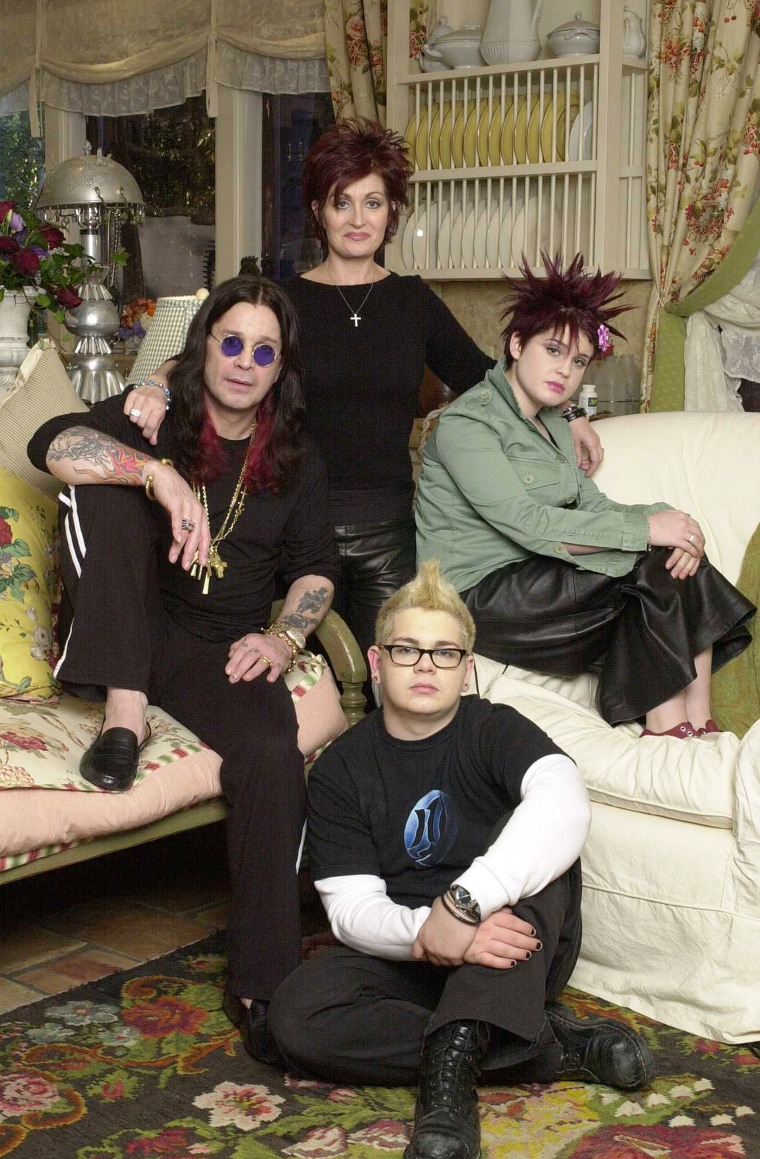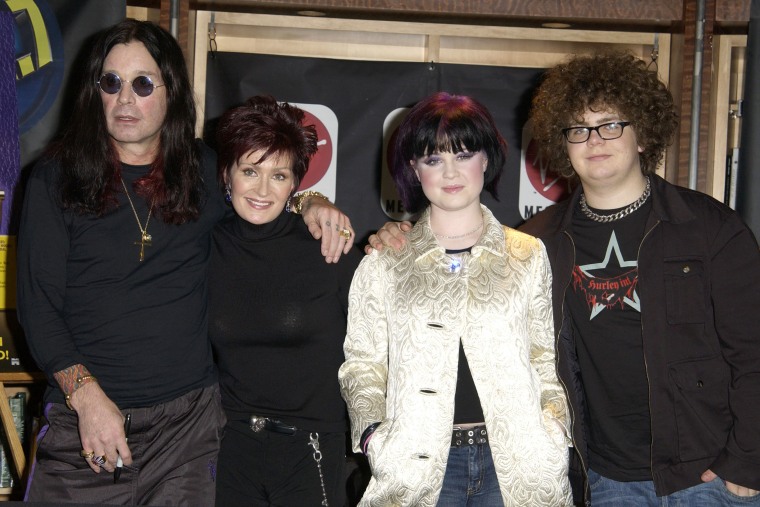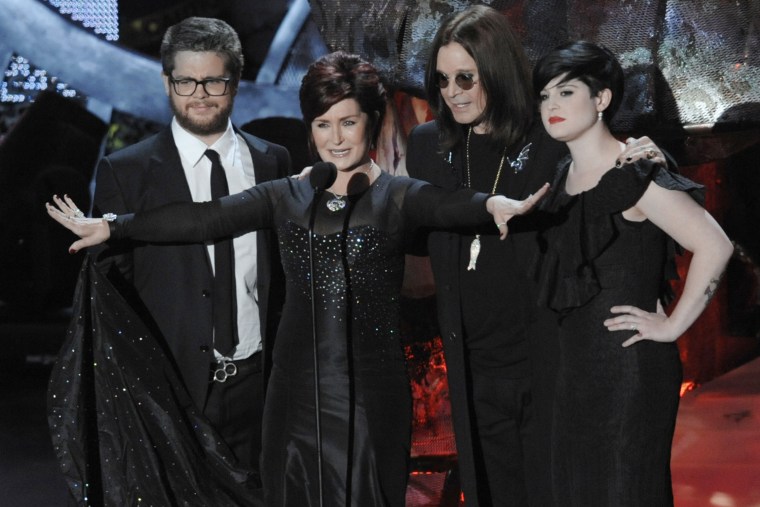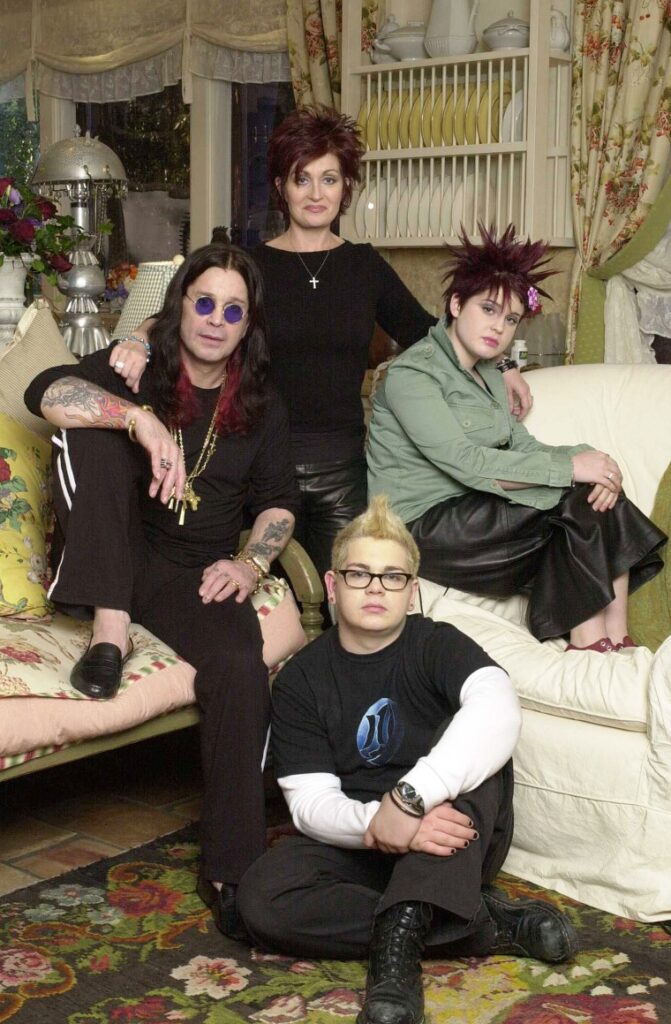In 2001, Rod Aissa was one of a handful of MTV executives having lunch with Sharon Osbourne at a restaurant in Santa Monica, California, to discuss a potential collaboration with her family. Osbourne apologized for arriving late, blamed it on her husband’s antics and immediately launched into a dizzying play-by-play of her home’s hijinks that had everyone laughing — hard.
“We are over-the-top and crazy, and there’s a lot of cursing and fighting and dogs everywhere,” Aissa recalled her saying then, “but there’s so much love in our family.”
That family, of course, also includes Ozzy Osbourne, the heavy metal legend and Black Sabbath front man who accidentally became a pioneer in reality television, thanks to the early aughts phenomenon “The Osbournes.” With the news that Ozzy died Tuesday at 76, fans flooded social media with footage of the Prince of Darkness’ theatrical performances, as well as clips of him chasing his elusive cat through his backyard and unapologetically marveling at the assembly of a Chipotle burrito.
Before “The Osbournes” premiered in 2002, Ozzy Osbourne was known for pioneering heavy metal and popularizing “many of its over-the-top stereotypes: overindulgence, a disregard for obeying rules, a kind of cartoonish, perpetual adolescence,” said Craig Marks, music journalist and executive editor of HITS magazine. “To other hard-rock musicians especially, he was a force of nature, someone whose appetite for drugs was practically heroic.”

But it was the family around the rocker that piqued the interest of MTV executives, including Aissa, and led to the creation of a series that launched an entire television subgenre, while introducing him to a new generation who were too young to experience Black Sabbath’s heyday. A standout 2000 episode of “MTV Cribs” — in which teens Jack and Kelly Osbourne give MTV a tour of their home — had offered a glimpse into the chaotic but charming dynamics. It also presented Ozzy’s various paradoxes: originally from working-class Birmingham, England, and now moving into a brand-new Beverly Hills mansion; singing about death and the occult onstage and just trying to watch the History Channel at home.
“We knew we had lightning in a bottle because this family, with their love and dysfunction, represented so many of us in the world,” Aissa continued. “And it was going to be something special because of Ozzy — his sense of humor and his lack of inhibition to say anything or behave a certain way. You could never script him or ask him to do anything twice, because that wasn’t who he was. You couldn’t even ask Ozzy to walk through a door twice because the camera wasn’t ready. He’d just say, ‘F— off!’”
Countless hours of footage over three years captured the family’s everyday rhythms — tending to their many pets, meeting with famous friends and butting heads with neighbors — as well as their more major moments, like Sharon’s cancer diagnosis, Ozzy’s near-fatal quad bike accident, and the kids’ struggles with substances and newfound fame. It was all edited together like an American sitcom, complete with nostalgic graphics, upbeat needle drops and a crooner cover of Ozzy’s hit “Crazy Train” as its theme song.
“I had to watch the first episode with Ozzy, and it was the longest 22 minutes of my life,” Aissa said with a laugh. Afterward, “Ozzy didn’t say a word or laugh or anything; I thought he hated it. He stood up and said to me, ‘I love them so much. Do not f— this up.’”

“He didn’t love it, but he loved being at home with the family, and [the show] gave them all a reason to be together and really connect,” he added. “At that point in his career — platinum records everywhere, sold-out worldwide tours, a recording studio in his house — Ozzy didn’t need this show, and he had no real interest in it. But as the episodes aired, and as people started talking to him about what a real family they are, he started really appreciating what it was they were doing.”
The show’s March 2002 premiere was an instant hit. It became both MTV’s highest-rated series to date and the most-watched show on any cable channel; its first season went on to win the Emmy Award for best reality program. And its cultural impact was global, given the network’s indisputable cultural standing.
“MTV was still the be-all end-all for youth culture when ‘The Osbournes’ debuted,” said Marks, who also co-wrote the book “I Want My MTV: The Uncensored Story of the Music Video Revolution.” “Social media didn’t really exist yet — Myspace would launch in 2003 — and ‘MTV Cribs,’ arguably the network’s first ‘celebrity’ reality show, started in 2000 and was a hit. But nothing compared to the cataclysm of ‘The Osbournes.’”

In those days, unscripted shows were just emerging, especially those featuring the rich and famous. But the early 2000s were also the height of magazine tabloids and celebrity obsession, said Colette Shade, author of the book “Y2K: How the 2000s Became Everything (Essays on the Future That Never Was).” The Osbournes and their bumbling patriarch simply arrived at the right moment.
“People enjoyed the fact that it was this behind-the-curtain look, and that he came off in the show as just shuffling around befuddled by various aspects of modern life, in an endearing and silly way that’s very different from his public persona,” Shade said. “Ozzy was known in a certain way by boomers, but as the old guy from ‘The Osbournes,’ he was able to connect with a new audience of millennials without even trying.”
After the show’s run, each family member became a standalone TV personality: Sharon as an author, reality competition judge and talk show host; Kelly as a commentator on E!’s “Fashion Police”; and Jack as a travel reporter and docuseries producer (including shows with Ozzy and Sharon).
Though “The Osbournes” only ran for four seasons over three years, its impact continues. The series cemented MTV as a hub for zeitgeisty unscripted programming, with “Punk’d,” “Newlyweds: Nick & Jessica” and “Laguna Beach” premiering in the years that followed. Networks tried to capitalize on unexpected juxtaposition of the ordinary and the ostentatious, like Paris Hilton and Nicole Richie’s labor-centric “The Simple Life” and the Playboy Mansion-set “The Girls Next Door.”
Numerous copycat projects — starring Hulk Hogan, Gene Simmons, Terry Bradshaw, Joseph “Rev Run” Simmons, Snoop Dogg, Sylvester Stallone, Alec Baldwin, the Kardashians and more — have since attempted to replicate Ozzy’s singular “celebrity at home” charisma.
“It was an extremely successful show that was brand-new and relatively cheap to produce,” Shade said. “They created this whole new publicity tool for celebrities to burnish their image and revive their careers, and it’s become its own category of reality show that’s kind of played out. People now see it as more of a construction than maybe they did at the time.”
That’s because, back then, it really wasn’t. Unlike today’s unscripted titles — oftentimes with prespecified storylines, setup scenes, talking-head interviews and personal branding plans — “The Osbournes” was built with little strategy and no real expectations. “To be honest, we didn’t really know what we were doing yet, because no one had done it before,” Aissa admitted with a laugh.
“We didn’t set out to make reality television; we just set out to make television,” he continued. “They weren’t trying to be reality stars. They were just being their authentic selves, interacting with each other as if they didn’t see the cameras. It was as if they didn’t care, and I think that was a big part of the magic.”
